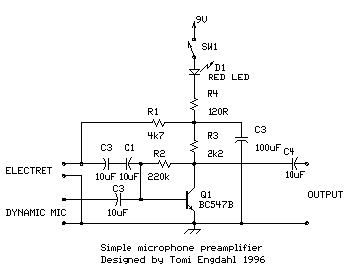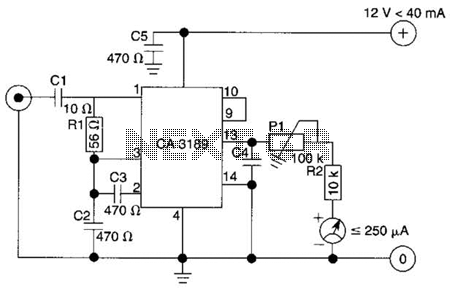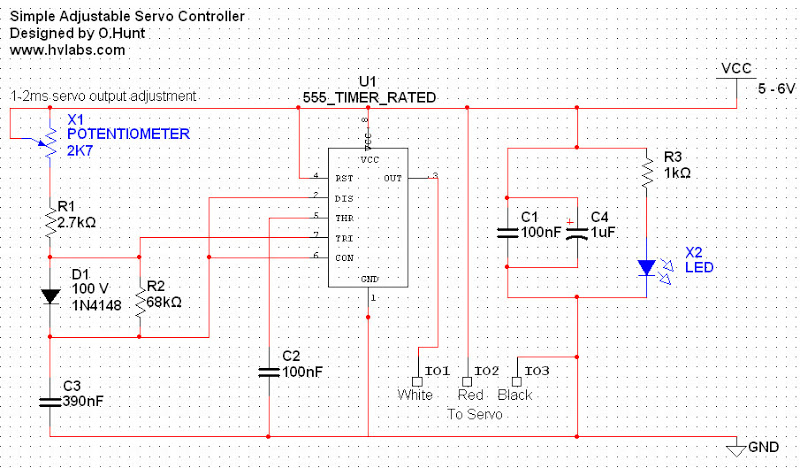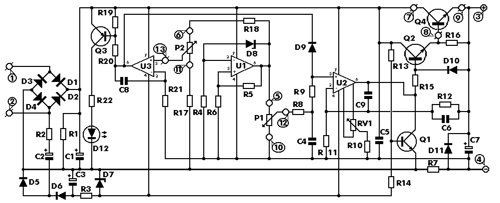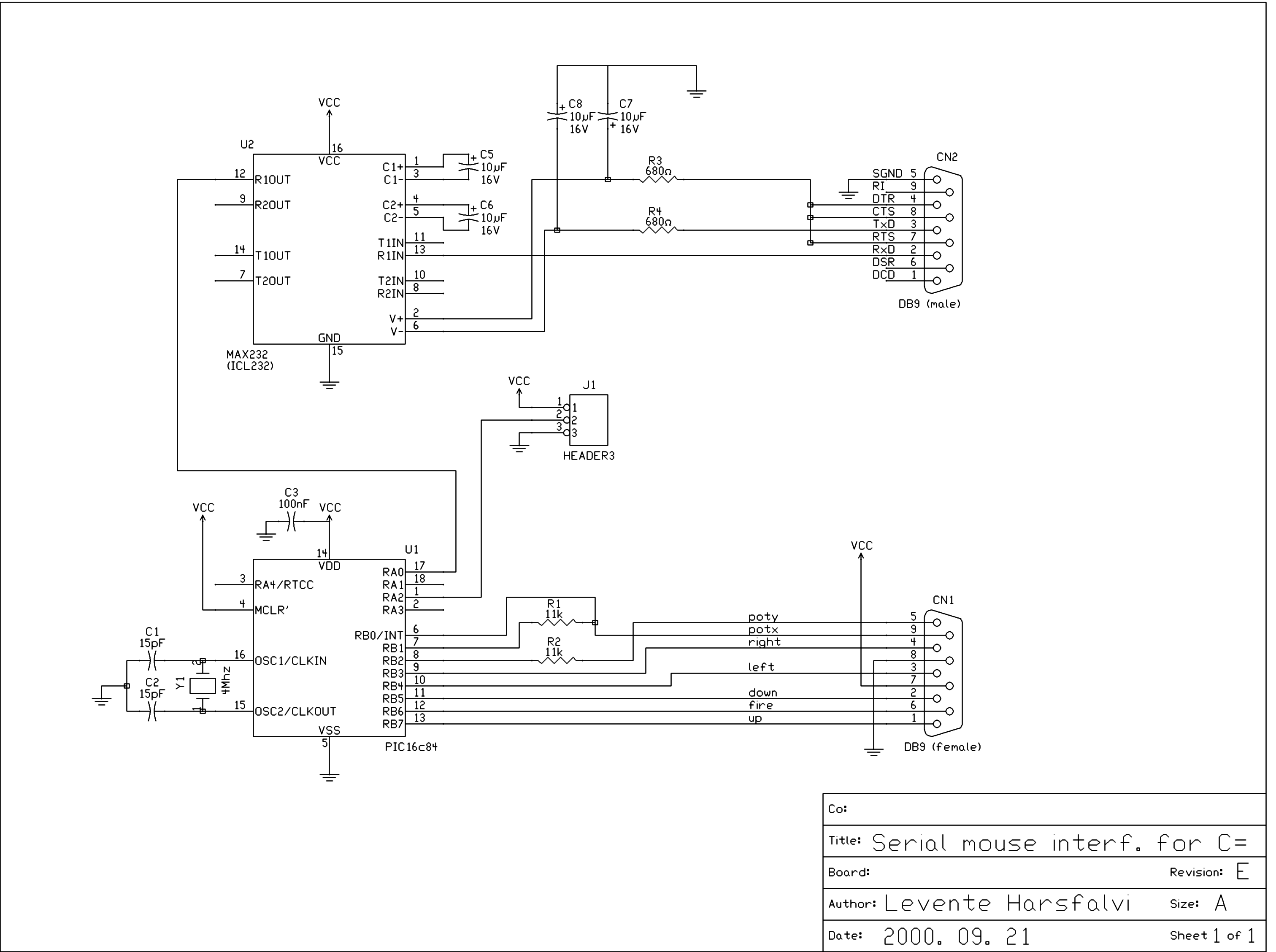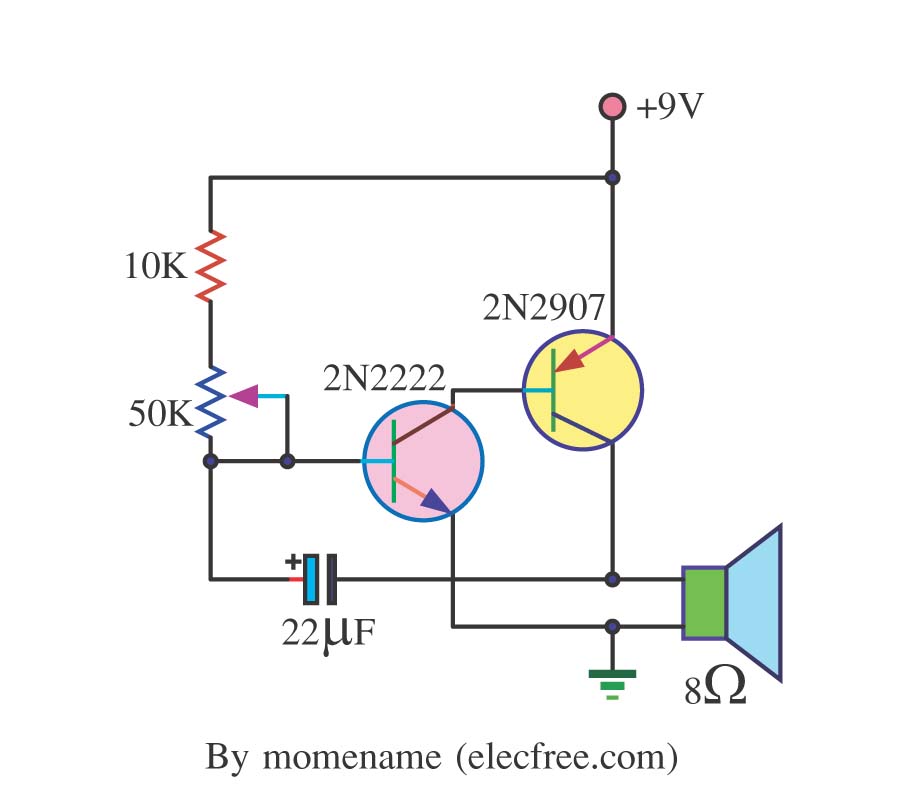
Simple Serial AVR Programmer
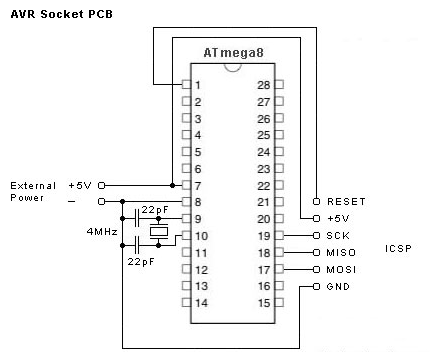
This simple AVR programmer is capable of transferring hex programs to most Atmel AVR microcontrollers. It is more reliable than many other basic AVR programmers available and can be assembled in a short amount of time. This programmer supports a wide range of AVR microcontrollers, including ATmega103, ATmega161, ATmega163, ATmega323, ATmega128, ATmega8, ATmega16, ATmega32, ATmega162, ATmega169, ATmega8515, ATmega8535, ATmega44, ATmega88, ATmega168, ATmega164, ATmega324, ATmega644, ATmega640, ATmega1280, ATmega1281, ATmega2560, ATmega2561, AT90CAN32, AT90CAN64, AT90CAN128, ATtiny12, ATtiny15, ATtiny26, ATtiny2313, ATtiny13, ATtiny25, ATtiny45, ATtiny85, ATtiny261, ATtiny461, and ATtiny861. It can also be integrated directly into the main circuit by adding a connector for the programming cable, eliminating the need to remove the chip during programming. The PCB connector has been designed to fit the ATmega8 AVR microcontroller in a 28-DIP package, but a PCB socket can be fabricated for other AVR microcontrollers. The AVR programmer software is compatible with popular PonyProg, which displays a status bar indicating the progress of programming. The minimum schematic requires a 4 MHz crystal, although other crystal frequencies can be used depending on fuse bit settings. Caution is advised when setting fuse bits and security locks, as incorrect settings may render the chip irrecoverable and potentially damage it, necessitating a high voltage programmer.
This AVR programmer design emphasizes simplicity and reliability, making it an excellent choice for both hobbyists and professionals working with AVR microcontrollers. The ability to program multiple microcontroller types expands its utility across various projects. The integration of the programming cable directly into the circuit board allows for seamless programming without the need for chip removal, which is particularly advantageous in applications where the microcontroller is embedded within a larger system.
The PCB layout for this programmer should include a standard 6-pin or 10-pin ISP header, which is commonly used for AVR programming. This header facilitates the connection between the programmer and the target microcontroller. The programmer circuit typically consists of a few essential components, including the microcontroller interface, a voltage regulator to ensure stable power supply, and the crystal oscillator for timing.
For the programming process, the software interface, such as PonyProg, communicates with the programmer via a serial or USB connection, sending the hex file data to the microcontroller. The programming sequence involves erasing the chip, writing the new firmware, and verifying the written data to ensure integrity.
When designing the programmer, attention must be paid to the power supply requirements of the target microcontroller, as well as the logic levels used in the programming signals. This ensures compatibility with a wide range of AVR devices. Additionally, implementing protection features, such as a reset button and LED indicators for power and programming status, can enhance user experience and safety during operation.
Overall, this AVR programmer is a versatile and efficient tool for programming a variety of Atmel AVR microcontrollers, making it an essential component for any electronics engineer or enthusiast working with embedded systems.This simple AVR Programmer able to transfer hex programs to most ATMEL AVR microcontrollers. It is more reliable than most other simple AVR programmers available out there and can be built in very short amount of time. This Programmer support the AVR microcontroller ATmega103, ATmega161, ATmega163, ATmega 323, ATmega128, ATmega8, ATmega16, ATmega6
4, ATmega32, ATmega162, ATmega169, ATmega8515, ATmega8535, ATmega44, ATmega88, ATmega168, ATmega164, ATmega324, ATmega644, ATmega640, ATmega1280, ATmega1281, ATmega2560, ATmega2561, AT90can32, AT90can64, AT90can128, ATtiny12, ATtiny15, ATtiny26, ATtiny2313, ATtiny13, ATtiny25, ATtiny45, ATtiny85, ATtiny261, ATtiny461, and ATtiny861. you can also use it directly in the main circuit by adding a pin to plug this cable programmers, so you do not need to remove the chip while it is to program.
The PCB connector has been created to match the ATmega8 AVR microcontroller, 28-DIP, but you can build a PCB socket for each other AVR microcontroller out there. This AVR programmer software is compatible with popular PonyProg showing the status bar the progress of programming.
This minimum system schematics using crystal 4 Mhz, you can use other crystal frequency depend on your fuse bit setting, please be careful when setting fuse bit and security lock. if you wrong. you can`t recovery your chips and your chips will damage. expected, you have High voltage programmer. 🔗 External reference
This AVR programmer design emphasizes simplicity and reliability, making it an excellent choice for both hobbyists and professionals working with AVR microcontrollers. The ability to program multiple microcontroller types expands its utility across various projects. The integration of the programming cable directly into the circuit board allows for seamless programming without the need for chip removal, which is particularly advantageous in applications where the microcontroller is embedded within a larger system.
The PCB layout for this programmer should include a standard 6-pin or 10-pin ISP header, which is commonly used for AVR programming. This header facilitates the connection between the programmer and the target microcontroller. The programmer circuit typically consists of a few essential components, including the microcontroller interface, a voltage regulator to ensure stable power supply, and the crystal oscillator for timing.
For the programming process, the software interface, such as PonyProg, communicates with the programmer via a serial or USB connection, sending the hex file data to the microcontroller. The programming sequence involves erasing the chip, writing the new firmware, and verifying the written data to ensure integrity.
When designing the programmer, attention must be paid to the power supply requirements of the target microcontroller, as well as the logic levels used in the programming signals. This ensures compatibility with a wide range of AVR devices. Additionally, implementing protection features, such as a reset button and LED indicators for power and programming status, can enhance user experience and safety during operation.
Overall, this AVR programmer is a versatile and efficient tool for programming a variety of Atmel AVR microcontrollers, making it an essential component for any electronics engineer or enthusiast working with embedded systems.This simple AVR Programmer able to transfer hex programs to most ATMEL AVR microcontrollers. It is more reliable than most other simple AVR programmers available out there and can be built in very short amount of time. This Programmer support the AVR microcontroller ATmega103, ATmega161, ATmega163, ATmega 323, ATmega128, ATmega8, ATmega16, ATmega6
4, ATmega32, ATmega162, ATmega169, ATmega8515, ATmega8535, ATmega44, ATmega88, ATmega168, ATmega164, ATmega324, ATmega644, ATmega640, ATmega1280, ATmega1281, ATmega2560, ATmega2561, AT90can32, AT90can64, AT90can128, ATtiny12, ATtiny15, ATtiny26, ATtiny2313, ATtiny13, ATtiny25, ATtiny45, ATtiny85, ATtiny261, ATtiny461, and ATtiny861. you can also use it directly in the main circuit by adding a pin to plug this cable programmers, so you do not need to remove the chip while it is to program.
The PCB connector has been created to match the ATmega8 AVR microcontroller, 28-DIP, but you can build a PCB socket for each other AVR microcontroller out there. This AVR programmer software is compatible with popular PonyProg showing the status bar the progress of programming.
This minimum system schematics using crystal 4 Mhz, you can use other crystal frequency depend on your fuse bit setting, please be careful when setting fuse bit and security lock. if you wrong. you can`t recovery your chips and your chips will damage. expected, you have High voltage programmer. 🔗 External reference
